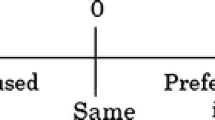Abstract
Fifty children ages 4–10 yr with type 1 diabetes mellitus volunteered to participate in a study to evaluate and compare a new needle-free device developed for growth hormone delivery. Children answered descriptive questions related to nervousness and worry, hurt or pain, redness or bleeding, and stinging and wetness. Choices for answers for each of these five questions were none, a little, or a lot. None or a little was also combined to give a minimal category. Children also answered four questions that compared the needlefree device to their morning insulin needle injection in reference to case of use, pain, nervousness, and overall preference. Half the children had single comfort rings inserted to increase the injection pressure. Results indicated no difference in question responses with or without pressure rings. Pain (92%), erythema (96%), worry (90%), stinging (86%) and wetness (96%) were minimal and significant (0.001>p<0.03) following all questions. Results of the comparative questionnaire indicated that the device was easier (p<0.03) to use than needles and significantly preferred (p<0.001) in 74% of children under age 10.
Similar content being viewed by others
References
Gonzalez, J. L., Verrips, G. H., Fekkes, M., and Hirasing, R. A. (1998). Today's Ther. Trends 16, 53–71.
Verhagen, A., Ebels, J. T., Dogterom, A. A., and Jonkman, J. H. G. (1995). Eur. J. Clin. Pharmacol. 49, 69–72.
Verrips, G. H., Hirasing, R. A., Fekkes, M., Vogels, T., Verloove-Vanhorick, S. P., and Delemarre-Van de Waal, H. A. (1998). Acta Pediatr. 87, 154–158.
Houdijk, E. C. A. M., Herdes, E., and Delemarre-Van de Waal, H. A. (1997). Acta Pediatr. 86, 1301–1307.
Murray, F. T., Silverstein, J. H., Johnson, S. B., Gertner, J. H., Frye, K., Gironda, G., and Stene, M. (2000). Today's Ther. Trends 18, 71–86.
Murray, F. T., Silverstein, J. H., Frye, K., Gertner, J. H., Johnson, S. B., Diamond, T., and Grossman, M. A. (2000). Today's Ther. Trends 18, 305–312.
Med. Lett. 43, 2,3.
Schneirder, U., Burnbacker, R., and Schober, E. (1994). Eur. J. Pediatr. 153, 409–410.
Houtzagers, C. M. G. J., Visser, A., Berntzen, P. A., Heine, R. J., and Van der Veen, E. A. (1988_. Diabetic Med. 5, 135–138.
Denne, J. R., Andrews, K. L., Lees, D. V., and Mook, W. (1992). Diabetes Educator 18, 223–227.
Fleiss, J. L. (1973). Statistical methods for rates and proportions. J. Wiley & Sons: New York.
Broownlee, K. A. (1967). Statistical theory and methodology in science and engineering, 2nd ed. (third printing). J. Wiley & Sons: New York.
Author information
Authors and Affiliations
Corresponding author
Rights and permissions
About this article
Cite this article
Silverstein, J.H., Murray, F.T., Malasanos, T. et al. Clinical testing results and high patient satisfaction with a new needle-free device for growth hormone in young children. Endocr 15, 15–17 (2001). https://doi.org/10.1385/ENDO:15:1:015
Issue Date:
DOI: https://doi.org/10.1385/ENDO:15:1:015



